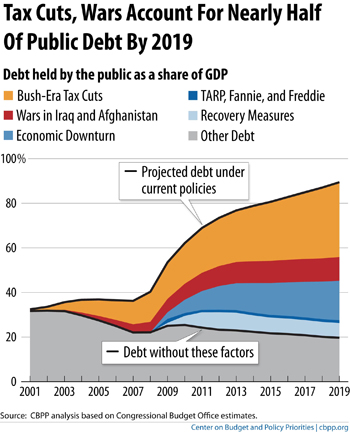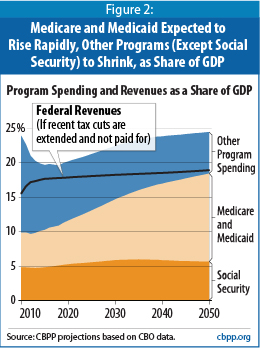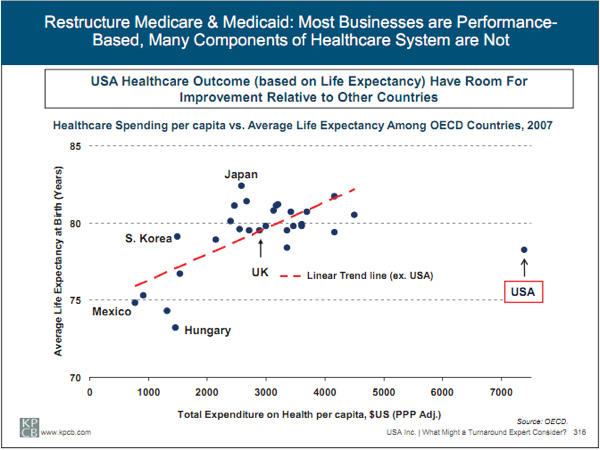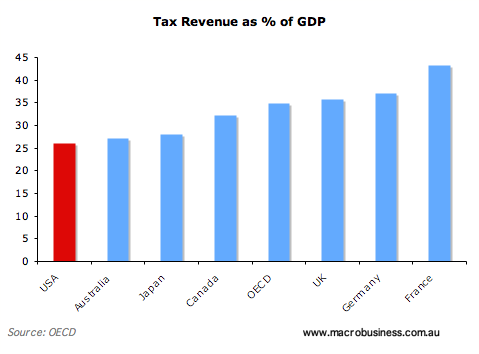After a series of posts examining the fiscal woes of the United States (see here, here and here for example), I have refrained from posting on the issue for the past couple of months, mainly because I have little to add that I have not already said. In short, yes, the US has a longer-term fiscal problem. Yes, this needs to be addressed. No, now is not the right time to be making big budget cuts. No, the US does not need to default. No, hyperinflation is not imminent. And no, the US is not Greece.
However, this is not the subject of today’s post.
Solutions to the debt problem are controversial. But today, I would like to simply examine what the cause of the US deficit is. After all, if we can’t even agree on the cause, how can we possibly come to agreement on any kind of solution?
Now, this shouldn’t be such a complicated subject — after all there is plenty of official data that will answer all of our questions. But having observed the comment thread of several blog posts (on MacroBusiness and elsewhere) in recent weeks, it occurred to me that the causes of the deficit are still a poorly understood subject. Given the misinformation, hysteria and political rhetoric that pass for serious debate in our media these days, perhaps we shouldn’t be surprised. So let’s examine some basic questions.
Why is the US deficit so large?
To many, this seems like an obvious question. Turn on Fox News, and you will be led to believe that it is the inevitable result of trillions of dollars of out of control spending from President Barack “Karl Marx” Obama. However, while the stimulus was a large reason for the deficit blowout in the immediate aftermath of the GFC, the reality, of course, is much more complicated.
The chart below (from the Center for Budget Policy Priorities) illustrates that, overwhelmingly, the biggest cause of the blowout in public debt over the past decade was the massive income tax cuts (mostly to high-income Americans) enacted by President Bush. If you add the enormous cost of the wars in Iraq and Afghanistan (and include the associated interest payments), you can explain almost half of the public debt forecast out to 2019. A large portion of the remainder is explained by the severity of the economic downturn itself, which led to a plunge in tax revenues, and at the same time, an increase in “automatic stabilizers” such as unemployment benefits and food stamps. After all, we are still emerging from the biggest economic downturn since the 1930s.
So I repeat, whatever you think of the Obama stimulus and the bailout of the big banks, etc, this has very little to do with the current and future fiscal issues of the United States.

The US was already a relatively low tax nation before the Bush-era income tax cuts, but as you can see below, it is now by a comfortable margin the lowest taxed country in the OECD. Now, I understand that this is many libertarians’ idea of a fantasy nation, but the persistently low level of tax revenues makes it very difficult to balance the budget, particularly when the US spends almost as much as the rest of the world combined on defense, and this portion of the budget has traditionally been quarantined from cuts.
Medicare Madness
So, the revenue side is a problem. But what about reckless spending? Isn’t this a bigger issue in the longer term? The chart below shows that in the longer term, the primary driver of the deficit (in fact, you could go so far as to say the only thing that really matters) is the massive rise in projected healthcare spending in the government programs Medicare and Medicaid.

Keep in mind that the blue sliver above includes defense, as well as vital public services like education, policing, infrastructure, etc. There is simply not a lot of room to cut here.
So what’s going on with the massive rise in medical spending? Well, like most other developed nations, the US has an ageing society, and to a certain extent, a rise in medical spending is inevitable. But the problem in the US is a whole lot worse than anywhere else in the world. The chart below illustrates why (hat tip to John Hempton).

Essentially, the US spends about twice as much on healthcare as most other developed nations, and incredibly, despite this massive spending it gets very average healthcare outcomes (in terms of metrics like infant mortality, etc). As the economist Uwe Reinhart says, this is a result of the following factors:
1. higher prices for the same health care goods and services than are paid in other countries for the same goods and services;
2. significantly higher administrative overhead costs than are incurred in other countries with simpler health-insurance systems;
3. more widespread use of high-cost, high-tech equipment and procedures than are used in other countries;
4. higher treatment costs triggered by our uniquely American tort laws, which in the context of medicine can lead to “defensive medicine” — that is, the application of tests and procedures mainly as a defense against possible malpractice litigation, rather than as a clinical imperative.
So in summary, the fiscal woes of the US have little to do with out of control stimulus spending. The problem is very simple: insufficient revenues due to reckless tax cuts (mostly for the wealthy), and excessive spending due almost solely to runaway healthcare costs.
Anybody who professes to care about the deficit has to offer a solution to both of these issues.
